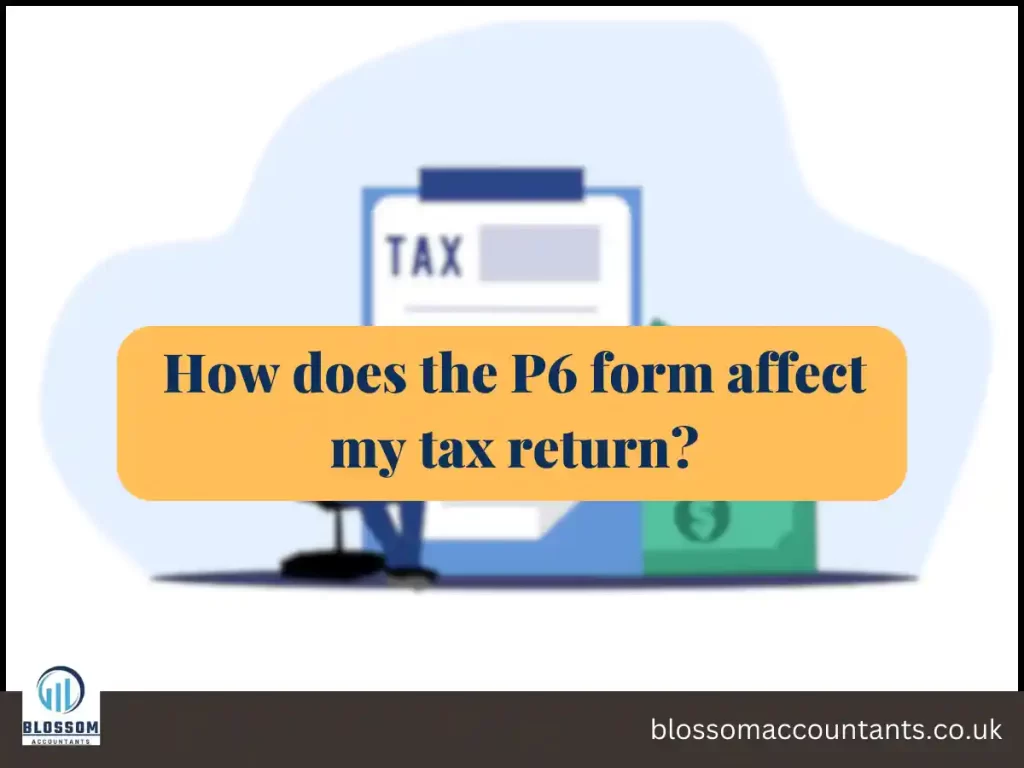P6 form plays a crucial role in the UK tax system. It is a form used by HM Revenue and Customs (HMRC) for additional income, such as rental income, self-employment income, or other sources of taxable income. In this article, we will try to explain the P6 form to answer some common questions surrounding its purpose and usage and how it affects your taxable income in the UK.
Table of Contents
What is the P6 form?
The P6 form is a document used by HMRC in the UK to notify individuals or entities about an additional source of taxable income. It provides details about the income, including the amount, frequency, and relevant tax codes.
Who send P6 form?
The P6 form is sent by HM Revenue and Customs (HMRC) in the United Kingdom. HMRC is the government department responsible for administering taxes and other financial matters. They use the P6 form to notify individuals or entities about potential additional taxable income that needs to be reported and accounted for in the tax calculations.
Why HMRC issue P6 notice?
HMRC sends tax code notice. On a regular basis, HMRC review all individuals’ tax code, based on the income details shared by the individuals, like the PAYE system, self-employed income, rental income, or any taxable income which needs to be reported to HMRC for tax obligations.
Also read: SA1 Form – Self Assessment

Who uses the P6 form?
HMRC typically send the P6 form to notify individuals or companies who may be required to pay additional tax on increased income. It is usually delivered to those who have already registered for self-assessment or who have disclosed taxable income.
How is the P6 form sent?
The P6 form is sent by HMRC either through the post or electronically via the recipient’s online account. If you are registered for self-assessment, you can expect to receive the form through your Government Gateway account or by mail to your registered address.
What information does the P6 form contain?
The P6 form includes important details regarding the additional income, such as the nature of the income (e.g., rental income or self-employment income), the amount, the frequency of payments, and any applicable tax codes or allowances.
Do I need to worry if I get P6 form from HMRC?
No, you do not need to worry. You can review details shared by HMRC and if you believe that these details are not correct then you need to speak to HMRC or take professional advice from an accountant.

What should I do upon receiving a P6 form from HMRC?
Upon receiving a P6 form, it is essential to review the information provided carefully. Compare it with your income records to ensure accuracy. If you believe the information is incorrect or incomplete, you should contact HMRC to rectify any discrepancies or take professional advice from an accountant.
Does receiving a P6 form mean I owe additional taxes?
No, not always. The P6 form is an HMRC notification of probable increased taxable income. It does not necessarily imply that you owe more taxes. You must review your overall income, including any additional income specified in the form, to see whether there is any additional tax burden on you.
How does the P6 form affect my tax return?
If you get a P6 form and the additional income listed on it applies to you, you must include it in your tax return. The form acts as a reminder to disclose the income and verify that it is accurately accounted for in your tax computations.
Also read: SA401 form

Can I appeal or dispute the information provided in a P6 form?
Yes, if you feel the information on a P6 form is wrong or inaccurate, you have the right to appeal or challenge it. To rectify any differences, contact HMRC’s helpdesk or submit an appeal through your online account.
Is there a deadline for responding to a P6 form?
While there is no specific deadline mentioned on the P6 form itself, it is crucial to address the form promptly. Failing to report the additional income within the required time frame could result in penalties or interest charges by HMRC.
What happens if I do not receive a P6 form for additional income I have received?
It is important to remember that if you do not get a P6 form does not excuse you from disclosing any additional income in that tax year. Regardless of whether you get a P6 form from HMRC, it is your job as a taxpayer to appropriately record all taxable income on your tax return.
Conclusion of HMRC P6 Form :
The P6 form is an important part of the UK tax system since it serves as a notification from HMRC of potential increased taxable income. It is critical to review it and answer to the form as soon as possible to HMRC to avoid any penalties or interest
DISCLAIMER: We have written the UK accounting and tax related details for your information only. For professional advice or for any accounting task you require, you may need to speak to a professional accountant near you who can assist you. Please read our disclaimer for more details.

